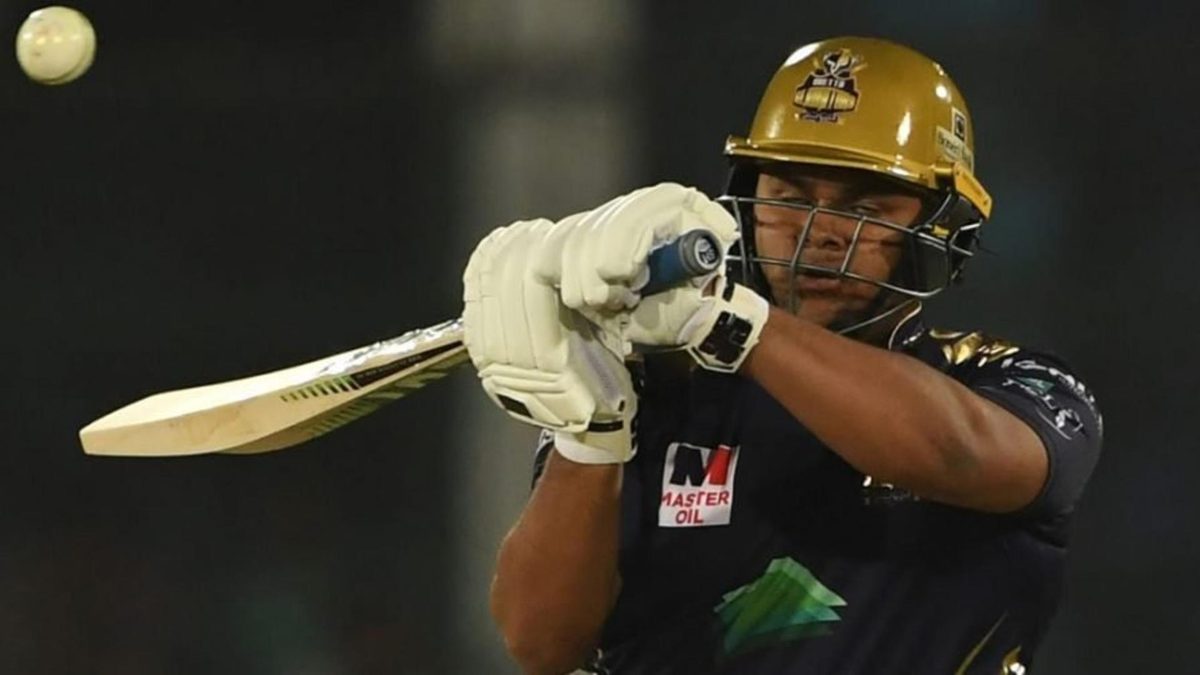
Azam Khan’s selection could help Pakistan plug a prominent gap in their T20I side ahead of the T20 World Cup, writes Rohit Sankar.
Subscribe to the Wisden Cricket YouTube channel for post-match awards, player interviews, analysis and much more.
Azam Khan’s T20 debut in the 2019 Pakistan Super League featured a scratchy 15-ball 12 for Quetta Gladiators with accusations of nepotism hogging social media. The son of former Pakistan wicketkeeper batsman, Moin Khan, Azam, taunted for his weight and fitness, was picked in the PSL side coached by his father and after watching him fidget and struggle to put bat on ball, Pakistan fans were furious.
Two years since, Azam has played 41 T20 matches, recording 819 runs at a strike-rate of 153.37. He has played 11 further innings of 15 balls or more and has struck at a rate of over 150 in nine of them.
He was called up to the Pakistan T20I side for the England series, after impressing for Quetta Gladiators and in the National T20 Cup in 2020 aside from a spectacular gig in the Lanka Premier League.
Nepotism debates kept raging with Pakistan’s Director of High Performance, Nadeem Khan being Azam’s uncle. Nadeem shut down the external noise by explaining that Pakistan “needs such players” in the T20I setup.
Nadeem Khan weighs in on the nepotism debate and how it could affect his nephew Azam Khan.#Cricket pic.twitter.com/5JEdIVxcdr
— Grassroots Cricket (@grassrootscric) March 21, 2021
Misbah-ul-Haq, the head coach, backed up his call, citing that the middle-order role was something Pakistan were looking to fill.
“The PSL made a few things clear,” Misbah said in a media interaction ahead of the England tour. “I think it is that one slot we are trying to fill, at no.5 and no.6, that we’ve had issues with. We have Azam Khan now and Sohaib Maqsood with us to see if they can, and what combination we can make with them.
“Everyone knows that in modern T20 cricket, the power you need at five or six, the strike rate you need, he [Azam] has the potential for that.”
Pakistan potentially have 15 T20Is – assuming the planned five-match series against New Zealand goes ahead as planned – ahead of the T20 World Cup. They play five against England (three away, two home) and five against West Indies before the proposed New Zealand series at home.
One of their primary goals will involve fixing their middle-order, where big hitters have gone missing. Pakistan have a solid top-order with Babar Azam and Mohammad Rizwan riding a seemingly never-ending purple patch of form, but in the second half of a T20I innings, where big hitting is mandatory skill, their performances have been below par.
Since the start of 2019, Pakistan have scored at a rate of 138.39 in the last 10 overs of a T20I innings. Among full member sides, only Sri Lanka, Ireland, Bangladesh and West Indies (their big middle-order stars often absent in this period) have a slower rate. Pakistan hit 2.9 sixes per innings in this half in this time period, again only better than Sri Lanka, Bangladesh and Ireland among full member sides.
To put things into perspective, New Zealand, the leading side in the strike-rate segment, score at nearly 160 in the second half of a T20I innings. While this is helped by their smaller grounds at home, a team struggling for finishers like India also go at 145.35 with 4.4 sixes per innings in the last 10 overs.
Azam’s performances have been key to Pakistan deeming him as a possible solution to the middle-order role. He is a ferocious ball striker, taking on spin and pace with equal ease and has a strike-rate of 147.3 in overs 10-16 where most players choose to rotate strike.
Notably, Azam scores at a rate of 196.2 against leg-spinners in the second half of the innings, having been dismissed just once by them. With most teams using leg-spinners through the middle overs, Azam gives Pakistan an option to take them on rather than see them through.
While Pakistan have accumulators in plenty, someone with the striking ability of Azam is a rarity in their setup. Since the start of 2019, only two batsman have a strike-rate of 150 or more for Pakistan – both tail-enders who swing the bat at will, Hasan Ali and Wahab Riaz.
The highest batting strike-rate by a player who has batted at least 10 times in this period is Mohammad Hafeez’s 143.28. Imad Wasim is the only other player with a 140-plus strike-rate.
Considering the make up of the squad, Azam and his big-hitting skills fit snugly into the setup. He is likely to get a fair few games to justify that he does belong on the big stage, to hush the voices that have been calling him out in the last couple of years. If he does, it will make Pakistan, who have their top-order and bowling sorted to an extent, strong contenders for the T20 World Cup.








